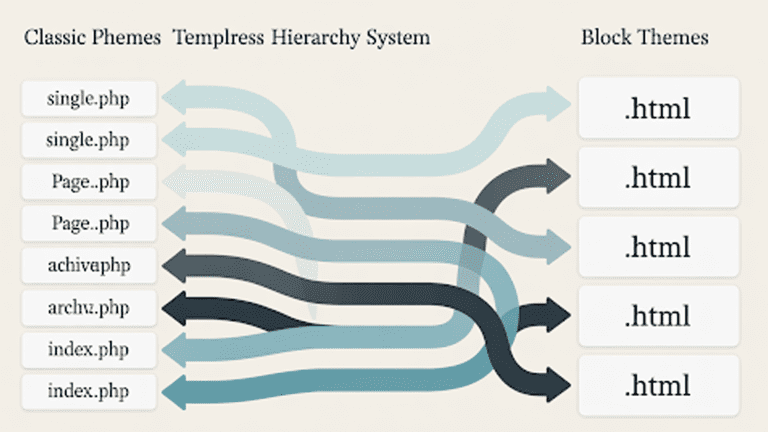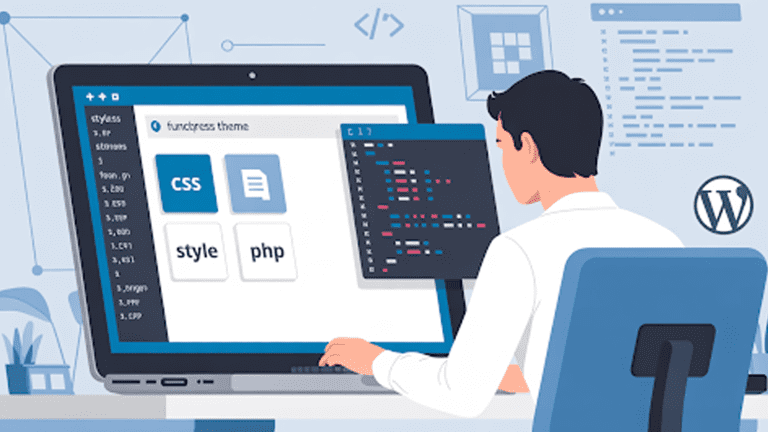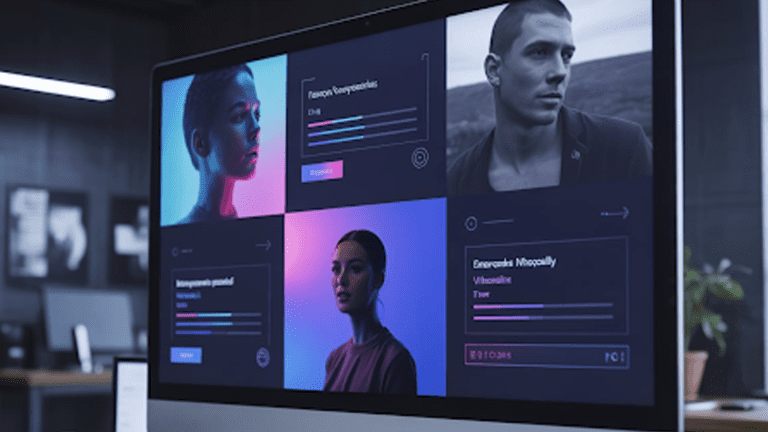It is a common misunderstanding of web development for new people in the field, creating the idea that it’s somehow very complex and requires extensive information on several coding languages such as JavaScript or PHP. That is not at all true. Python has established itself as one of the world’s most popular and easily accessible web development languages today with its simplicity, flexibility, and significant number of frameworks and libraries.
According to Statista, Python demonstrates significant growth in 2023, indicating its growing prevalence in web development and web applications. Furthermore, Python’s popularity among developers is notable, with 44.6% of respondents identifying it as their preferred language.
We’ll examine in detail some of the myriad reasons why the choice of a powerful toolset for Python web development, starting with an explanation of basic ideas in web development to guide you step-by-step on how to build a simple app. No matter how fresh you are from a learning background or if you are looking to enhance your skills, there is something here that can help with your learning of Python.
What is Web Development?
Web development is designing and creating sites and web applications. It relates to the aspect of designing site structure, function, and overall appearance and ensuring such a site is able to process tasks like handling user inputs and processing data within it or interacting with other web services.
There are two main components of web development:
-
Front-end Development
This is the layer that end-users interact with directly in their browsers. Usually, one sees the design and layout of how things are being presented on a page. There are technologies for structure, namely HTML; style, namely CSS; and for interactivity, JavaScript.
-
Back-end Development
This is the server-side aspect of web development; this is where the logic for things that go on behind the screen resides. It is used for database management, managing server requests, authentication, and myriad other functions. Programming languages associated with back-end development include Python, Ruby, PHP, and Java.
The objective of web development is not only to create a website, but also to ensure its speed, security, and the superior user experience it delivers.
Also Read: Java vs Python: Which One is Better for Your Project
What is Python Web Development?
Python web development is building the back-end (server-side) of websites and web applications using the Python programming language. Python is characterized by simple and readable syntax, which makes it easy for developers to write clean, maintainable code.
Unlike traditional programming languages, where you have to build every aspect from scratch, a good number of those frameworks and libraries for doing web development in Python ease your burden in terms of routing, security, and database interaction among others.
Python helps developers create everything, from simple personal blogs to web applications full of data. The language is great for building a modern, dynamic website since it is very versatile and easy to use.
Why Use Python for Web Development?
You might wonder, “Why choose Python when there are so many other programming languages out there?”
Let’s break it down:
| Reason | Explanation |
| Easy to Learn and Use | Python has a simple and readable syntax, making it beginner-friendly. |
| Comprehensive Libraries and Frameworks | Libraries like Django and Flask provide pre-written code, so you don’t have to reinvent the wheel. |
| Cross-Platform Compatibility | Python works across all major operating systems (Windows, macOS, Linux). |
| Scalable | Python is scalable, meaning you can start small and expand as needed. |
| Great Community Support | Python has a large, active community, meaning there’s always support and resources available. |
| Rapid Development | Python allows for faster development due to its simplicity and framework support. |
In short, Python helps developers save time, write cleaner code, and deliver high-quality applications faster.
How to Use Python for Web Development
The use of Python in website development generally contains two main phases: selecting a web framework and developing the programming code for either your website or web application.
Steps to Use Python for Web Development:
- Install Python: First, install Python is free, and you can download it from its official website. You can use it for web development once installed.
- Select a Framework: Frameworks are important for web programming with Python because they bring a structured way of building a web application.
Popular Python frameworks include:
- Django: High-level framework that is already provided with many features in the background to support rapid development, including an authentication system, an admin interface, and an object-relational mapper (ORM).
- Flask: A lightweight framework that offers flexibility but demands much more setup to be done by the developer.
- FastAPI: Modern, fast framework for building APIs with first-class support for real-time web applications and large datasets.
- Setup Environment: Install dependencies like a database, for instance, SQLite or PostgreSQL, and a web server, Gunicorn or Nginx.
- Write Your Code: All the logic and operations will be handled by your Python about how the web application handles data or performs user authentication
- Test and Deploy: The best way to be sure is by testing and then deploying to a server; that is if it’s supposed to be in a Heroku or AWS kind of environment.
What are Python Web Development Frameworks?
A framework is a collection of pre-written code that makes it easier to create applications. It’s a set of libraries, templates, and tools that aid in handling common tasks like routing, database interaction, and managing user sessions.
Popular Python web app frameworks include:
| Framework | Best For | Features |
| Django | Full-fledged web applications | Includes everything for web development, including ORM, authentication, and admin tools. |
| Flask | Small to medium-sized applications | Lightweight and flexible, with fewer built-in features for more customization. |
| FastAPI | API-focused applications | The high-speed framework is ideal for building APIs and handling asynchronous tasks. |
| Pyramid | Complex and large applications | Offers scalability, and flexibility, and can be used for both small and large projects. |
Each framework best suits different requirements. For large applications, like Django, with necessary built-in functions, while for relatively small, simplistic applications, one may find that Flask is ideal.
What Libraries Help in Python Web Development?
Along with frameworks, there are libraries for Python that make web development fast. Libraries automate common tasks such as making HTTP requests, parsing HTML, and interacting with databases.
Here are some commonly used libraries in Python web programming:
| Library | Purpose |
| Requests | For making HTTP requests to external APIs or web services. |
| BeautifulSoup | For parsing HTML and scraping data from web pages. |
| SQLAlchemy | A powerful ORM (Object-Relational Mapping) library for database interactions. |
| Celery | For handling asynchronous tasks (like sending emails). |
| Jinja2 | A templating engine used to generate dynamic HTML from Python code. |
These libraries make developing web applications faster, as they eliminate the need to write common functions from scratch.
How to Start Web Development with Python
If you are new to web development using Python, here’s how you get started step by step:
Installation of Python: Download and install Python from python.org. Make sure Python is added to your system’s PATH variable.
Choosing a Framework: For newbies, start with Flask since it’s lightweight and easy to set up. For advanced projects, use Django.
Set Up a Virtual Environment: Use a virtual environment to isolate your project’s dependencies. You can do this by running:

Install Necessary Packages: Use pip to install the required frameworks and libraries:
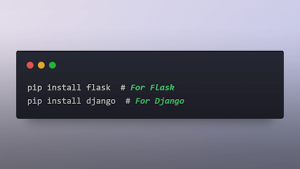
Start Coding: Begin with a simple project, such as a basic “Hello World” web app, and then gradually add more features.
How to Build a Simple Web App in Python
Let’s look at how to build a simple Python web app using Flask.
Install Flask:

Create a new Python file (app.py):
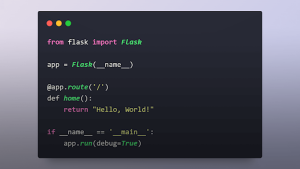
Run the app:
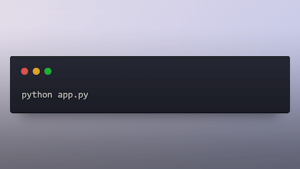
Now, when you go to http://127.0.0.1:5000/ in your web browser, you should see “Hello, World!” displayed. Congratulations, you’ve just created your first Python web app!
What Are the Best Python Web Development Practices?
Writing clean and maintainable code is crucial for web development. Here are some best practices for Python website development:
- Follow PEP 8: This is the official Python coding style guide. The code will, therefore, be readable and consistent.
- Use Virtual Environments: This avoids the version conflicts that may occur from different dependencies on different projects.
- Write Tests: Use testing frameworks like unittest or pytest to check whether your code works as it should.
- Use Version Control: Utilize Git to track changes, and also share with other developers.
- Keep Code Modular: Break the code into tiny, reusable segments (functions, classes, etc.) for more manageable maintenance.
What Makes Python Good for Web Development?
Python’s popularity in web development stems from several factors:
- Easy-to-Understand and Simple Syntax: Python has very easy-to-use, simple, and understandable syntax. Thus, it becomes the perfect one for the newcomer and even expert developers.
- Strong Ecosystem: Be it the likes of Django, Flask, and FastAPI, or in the Python context, these and all the tools available ensure a scalable feature-rich web application, developed for you.
- Large Community: A huge developer community is available; you can pretty much find anyone who can be of help for almost anything that you want to do.
- Easy Prototyping: Python helps out in rapid development, making it suitable for the quick prototyping or rapid development of functional applications.
You May Also Like: Python vs C Sharp: Which Language Fits Your Needs Best
Why Pick Python for Your Web Project?
If you’re considering using Python for web development, here are some reasons why it might be the right choice for your project:
- Speed of Development: Python makes it easy for developers to bring their ideas into code quickly. It is excellent for startups or single developers on a tight schedule.
- Scalability: From simple websites to complex systems, Python scales well for use cases across a wide spectrum.
- Rich Frameworks and Libraries: Python supports some of the richest frameworks and libraries, including Django and Flask for development ease and libraries to manage databases, authenticate users, and more.
What Are Advanced Python Tips for Web Development?
As you become more experienced in Python web programming, here are some advanced tips to help you take your web applications to the next level:
- Asynchronous Programming: Create applications that can process thousands of requests with asyncio and FastAPI.
- Use Docker: Using Docker will enable the easy creation of containers for your application, which will deploy and run easily in different environments.
- API Development: In fact, APIs can be created using Python – especially with FastAPI, which is perfect for creating fast and scalable web services.
How is Python Changing Web Development?
The simplicity and power of Python have already put it at the forefront of web development. Django and Flask have made both the development of small web applications and larger ones a simpler process. As more and more developers begin to opt for Python for websites, it keeps shaping the future of web development.
Conclusion
The development of modern websites and web applications has, through Python web development, been made more straightforward and accessible. Python is known for its simplicity in syntax and powerful frameworks combined with an active community, making it the best language for both freshers and old developers. Creating a personal website or a complicated web application falls under the skills of Python when it comes to web development and all the resources and tools.
We help businesses grow by creating websites and mobile apps for them. Check out our portfolio to see how we can help you succeed.
Our technical support team is available 24/7 if you have any questions. Feel free to contact us today!
FAQs
1. Can you build websites with Python?
Yes, Python is widely used for web development, especially with frameworks like Django and Flask. These tools allow developers to create web applications and websites efficiently.
2. How to use Python for web development?
To use Python for web development, you can utilize popular frameworks such as Django or Flask. These frameworks provide tools for web application creation, including URL routing, form handling, and database management.
3. Can Python be used for web programming?
Absolutely! Python and web programming go hand in hand. Using tools like web.py or Django, you can build dynamic web applications and websites, taking advantage of Python’s simplicity and readability.
4. What is the best Python framework for web development?
Django is one of the most popular, feature-rich web application frameworks of Python and is best for projects of any size in terms of web development. Flask is also an excellent option for small projects or whenever you need better control over the architecture of your application.
5. How to create a website with Python?
To create a website with Python, choose a web framework like Django or Flask. Then, you can start by setting up the framework, designing your site, and adding dynamic content using Python web programming techniques.


